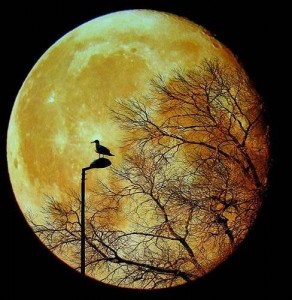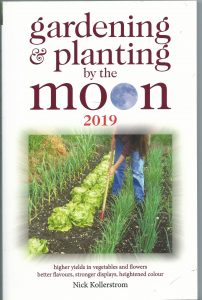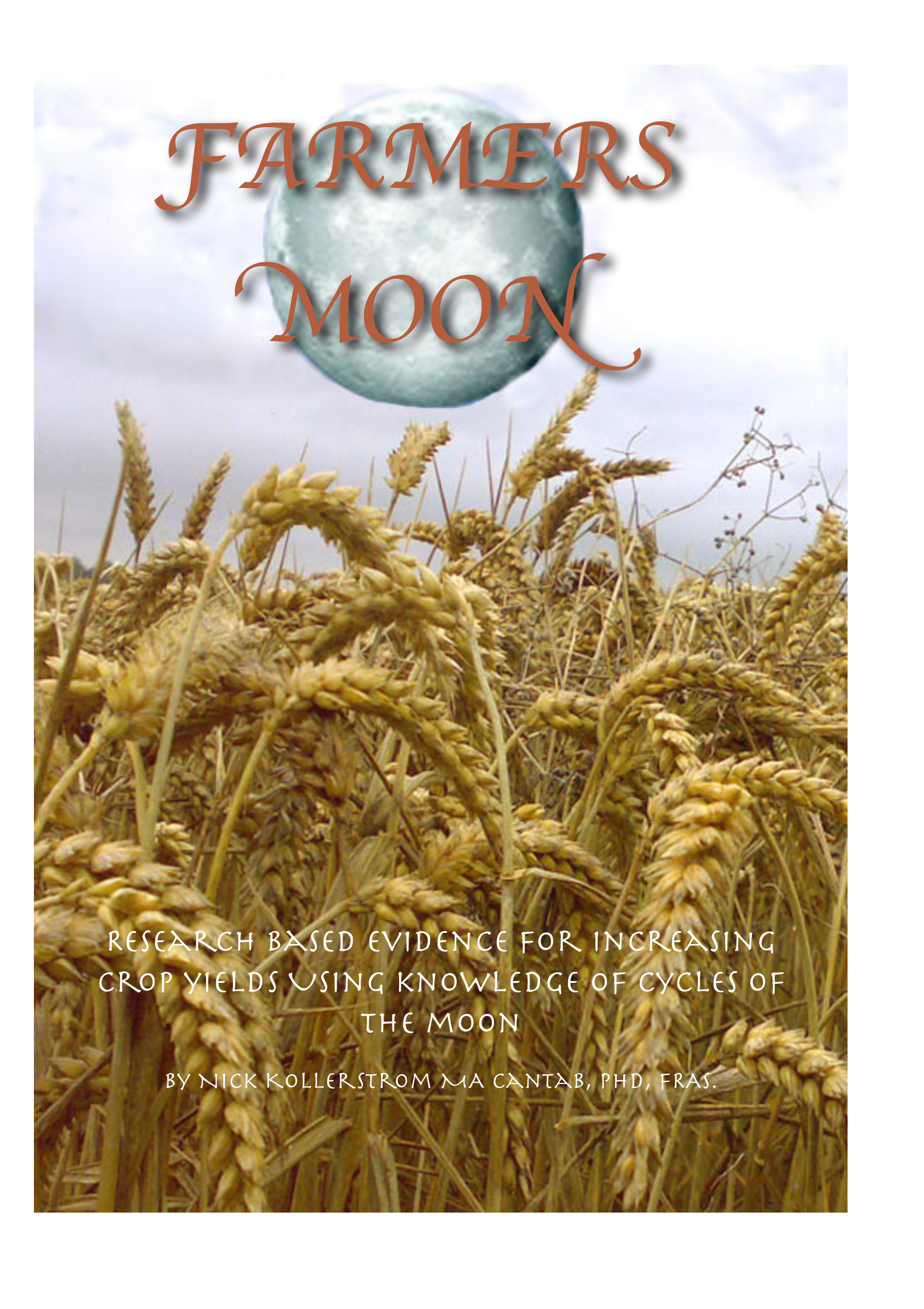Farmers’ Moon
0November 1, 2011 by NewAlchemyPress
* Fully reviews evidence whereby solar-lunar cycles are relevant to agriculture
to agriculture
* 230 pages, with many graphs and diagrams.
* It is worthwhile for organic growers to use a lunar calendar. If this issue has ever intrigued you, this could be the book you are looking for.
* Author’s interest in the topic began while working on a Bio-dynamic farm in the 1970s. In the 1980 he co-authored Britain’s lunar calendar, which has now been going for over thirty years. This work has been composed over three decades.
* To what extent is the fertility of animals – and, once upon a time, of womankind – attuned to the monthly lunar cycle?
* If you suffer from stress and depression, you may find that contemplating the majesty of the starry heavens and the subtle mysteries of lunar influence, takes it away. This work is about a mystery, namely the connection between Heaven and Earth.
* Calls for a new study of chronobiology – but this time without vivisection experiments. Thereby we can understand the cycles of Time.
This book is dedicated to Maria Thun (1922-2012) who did more than anyone else to pioneer the notion of a useful, Bio-Dynamic farming calendar. As The BBC News reported in 2009, ‘A German great-grandmother called Maria Thun is wielding huge influence on the British wine industry.’ Her very last publication was called ‘when wine tastes best,’ a guide for wine drinkers. A long time ago, Vettius Valens from Syria in the 2nd century AD first put the four elements into the zodiac- maybe he would have appreciated the fiery meaning she here gave, to the Moon’s transit across the sky-triangle of the Ram, Archer and Lion. That’s supposed to be the best time to pop open your bottle! Maria Thun’s first publication was way back in 1963, her first lunar gardening calendar, which came to be used right across Europe.
Timing Crop Planting By Cycles Of The Moon.
Based on a new approach made possible in the 20th century Biodynamic farming movement by Rudolf Steiner: which renewed the traditional practice of planting crops according to the condition of the moon. This has been practiced worldwide for millenia, and remains important in traditional cultures which preserve their lunar lore.
Research-Based Evidence For Increased Crop Yields.
Research-based evidence is presented in ‘Farmer’s Moon’ for improving crop quality and quantity, achieved by using a knowledge of lunar cycles. The subtle formative forces of Mother Nature are attuned to these lunar-solar motions, and modern organic gardeners and farmers can benefit from using these. Over thirty years I have gathered together the relevant evidence, including my own experiments. I’ve produced Britain’s moon-gardening calendar for thirty years and this book gives the background evidence as to why it works.
Introduction * Perspectives * Four Kinds of Month * Lunar Phase in Plant Growth-Rhythms * The Four-Element Theory of Thun * Design of a Time-Experiment * Star-Rhythm in Crop Yield * The Starry Script * Planets and Perennials * Horse-Breeding and the Lunar Month * The Silver Axioms * Conclusion
Buy paperback copy HERE, a Kindle version HERE, or get a PDF download or Apple ipad version HERE. The paperback edition is black and white, Kindle is in color.
[paiddownloads id=”1″]
Browse here a couple of chapters
(full version from Kindle):
Evidence
Online articles cover some of this material: Evidence for lunar-sidereal rhythms in Crop Yield (2001), – in which I opposed a certain sceptical trend amongst German Bio-Dynamic experts – published in Biological Agriculture and Horticulture. That concerns the basic, four-element rhythm on which the Bio-dynamic calendar is based. The article Lunar Effect upon Thoroughbred Mare Fertillty, published in the (Dutch) Biological Rhythms Research journal, showed how mares are very responsive to the lunar-month cycle – which no-one had expected as their estrus period is 21 days – and how this monthly rhythm of fertility is in turn greatly modified by the lunar-node cycle. This is the first time in the history of the world that anyone has shown this great lunar-fertility effect in horse breeding. Mares are most fertile on the days after the Full Moon, and least fertile a few days after the New Moon, i.e. about ten days earlier. This effect may not be specific to horses, but may rather be common to all living things.
Horses are most fertile around the Full Moons of late spring and early summer, and its a shame they are artificially made to breed earlier in the season by hormone treatment etc.
Supermoons
Every now and then an extra-strong moon happens when the Full Moon combines with perigee (closest approach). This can be associated with unusual weather conditions.It is a fairly new concept that is now becoming more widely known. In 2003 the Supermoon fell on 23 June, then in 2014 it will fall on 10th August, these can be 30% brighter than an ordinary Full Moon. An ideal time for a summer party perhaps? Here is Antipodean lunar calendar-composer Brian Keats explaining the astronomy:
You will find that up to twice in every year the perigee takes place within 12 hours of the full or new moon ie the perigee/apogee rhythm is in synch with the lunar phase rhythm. This beautiful fact comes about as 14 full moon cycles takes 413.32 days and 15 perigee cycles takes 413.42 days. When this occurs you will notice:
that it is the closest perigee of the year (proxigee) around 357,000kms; that a fortnight before or after the proxigee is the most distant apogee around 406,600km; that there are very high and very low tides in this period; that there will be widespread unusual or extreme occurences of weather (including earthquakes).
These lunar periods are known as “supermoons” a term coined by Richard Nolle and defined as “ a New or Full Moon which occurs with the Moon within 90% of) its closest approach to Earth”. The “supermoons” are 7.5 lunar months apart, alternating between new and full moons. Lunar rhythms have a correlation to rhythms in all fluids (including molten lava beneath our tectonic plates and plant sap). The extreme weather tends to be in a period 3 days either side of the the proxigee moon.
In 2014 the perigee distances will range between 356,900 at the proxigees to 369,800kms. Tidal forces are inversely proportional to the cube of the Moon’s distance and consequently there are huge differences within this range. It is well worth taking note of those perigees under 358,000kms each year.
In my experience of perigees prevailing climatic and weather / atmospheric conditions become exaggerated. If is tending towards wet, then it will be very wet and if it is a hot period, then it will be very hot! If it was summer I could expect floods in the tropics but heatwaves in a temperate zone. With a sense of anticipation of what could happen weatherwise in a particular month I can plan my horticultural activities. If a close perigee (under 360,000kms) is pending when my prevailing weather conditions have been warm and moist I could expect fungal activity to be rife and take prophylactic actions accordingly. That perigee, under those conditions, would obviously have a negative effect on seed plantings.
NB, ‘proxigee’ here means the closest perigee of the year. Bio-dynamic calendars advocate ‘no-planting’ on perigee days. You’ll notice that astronomers don’t ever talk about that rather precise linkup between the two lunar months, every fourteen moons, I guess because there is no reason why it should exist.
Here is my yearly Moon-Gardening Calendar, which has been going since 1980.
Listen to a lunar song here, to get you in the mood.
(sung by Frankie and Sue at the Walthamstow Folk Club)
Enigma of the Moon (a talk) * The Moon and Madness (book review) * The Moon and Horse Breeding * again * The Moon and Crop Yield
Category alchemy, astrology, biodynamic calendar, biodynamic gardening, gardeners calendar, moon gardening, science | Tags: Biodynamic, calendar, farming, Full Moon, gardening, lunar, lunar calendar, Moon, plants




Leave a Reply